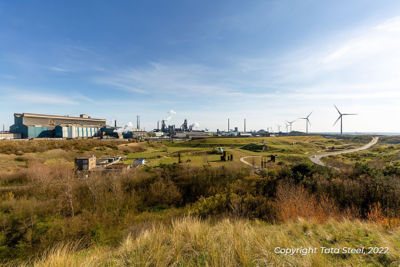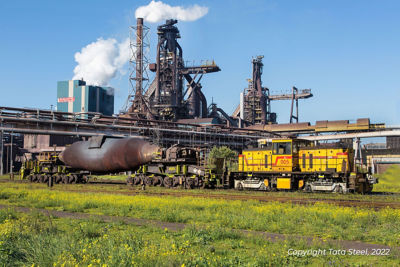-
United States -
United Kingdom -
India -
France -
Deutschland -
Italia -
日本 -
대한민국 -
中国 -
台灣
-
Ansys s'engage à préparer les étudiants d'aujourd'hui à la réussite, en leur fournissant gratuitement un logiciel de simulation.
-
Ansys s'engage à préparer les étudiants d'aujourd'hui à la réussite, en leur fournissant gratuitement un logiciel de simulation.
-
Ansys s'engage à préparer les étudiants d'aujourd'hui à la réussite, en leur fournissant gratuitement un logiciel de simulation.
-
Contactez-nous -
Carrières -
Étudiants et universitaires -
-
S'inscrire -
Déconnexion -
Espace client -
Support -
Communautés partenaires -
Contacter le service commercial
Pour les États-Unis et le Canada
+1 844.462.6797
-
ANSYS BLOG
November 28, 2022
Simulation Takes the Heat off Tata Steel During Production
Most of the processing steps in steelmaking involve high temperatures. It is these incredibly high temperatures that can drive up energy demand and maintenance for steelmakers and pose inherent safety risks for steel workers. Combating these competitive pressures requires a thoughtful tweaking of manufacturing processes and installation design optimizations that lead to safer, more price-performant production scenarios.
Setting aside uncertainty, Tata Steel Nederland (TSN) — one of Europe’s leading steelmakers and part of the Tata Steel group, which is one of the world’s most geographically diversified steel producers — scrapped a “trial-and-error” approach to production for a more reliable one based on digital technologies. Ansys is an important partner in this process.

The IJmuiden steelworks of Tata Steel Nederland.
Dr. Sido Sinnema, Knowledge Group Leader of the Materials Engineering and Mathematical Modeling Group (MEM), coordinates a team of skilled researchers and specialists in materials and numerical modeling for high-temperature applications. In this article, with Dr. Bruno Luchini and Dr. Paul van Beurden, he walks us through Ansys simulation tool usage in such harsh environment.
“Part of our simulation activities involves assessing several scenarios for process and installation optimization as well as root cause analysis,” says Luchini, principal researcher and project leader, R&D Ironmaking, Steelmaking, and Casting for Tata Steel Nederland. “The possibility of simulating multiphysics problems with Ansys products enables us to better evaluate failure mechanisms of the distinct materials/equipment present in the plant.”
“Ansys Mechanical is used to develop sophisticated thermomechanical finite element method (FEM) models to investigate the relationship between temperature change rates and stresses occurring to the refractory lining. Modeling these relationships enables optimization of heat treatment procedures while minimizing damage risks,” says Van Beurden, principal researcher and project leader, R&D Ironmaking, Steelmaking, and Casting at Tata Steel Nederland.
Time for a Temperature Check
An inherent challenge for Tata Steel is in maintaining the slab reheating furnaces. During longer maintenance stops, the furnaces must be cooled down. Operating at 2,370 degrees Fahrenheit, this is no small task, as simply turning them off results in thermal shock that can effectively crack the furnace lining. The same is true for reheating the furnace. Any temperature changes must happen gradually to avoid any costly damage. At the same time, cooling or heating the furnace too slowly can also result in the loss of a significant amount of production time.
Ansys simulation played a critical role in understanding the relationship between furnace temperature rates and refractory lining damage and stress. Tata Steel Nederland measures the material properties of its refractories in the lab, then measures the temperatures of their furnace lining using thermocouples. Integrating these into a thermomechanical model of the furnace enabled the steel manufacturer to calculate the stresses that occur to better comprehend what happens during regular heating-up and cooling-down procedures.
In this scenario, Mechanical is used to investigate what happens when heating or cooling rates are increased or decreased. By doing so, cooling and heating times could be minimized. As a result, the MEM team reduced furnace downtime by 400 hours annually, increasing steel product capacity by more than 5% while significantly reducing fuel gas consumption and CO2 emissions.
In an upstream part of the production process, liquid pig iron (or hot metal), an intermediate product in the production of steel, is produced and transported. To improve process control and increase reliability of the production of the liquid hot metal, it is necessary to be able to predict its temperature at any moment in time. Using an FEM thermal process model developed in Mechanical and validated by thermocouple measurements, the temperature field of the production installations can be simulated and used to derive the liquid metal temperature. However, the application of such a FEM model in real-time process operation is limited due to lengthy computation times.
Instead, a reduced-order model (ROM) based on the FEM model simulation results was used — as a reference, 1 second (ROM) versus 2 hours (FEM), with less than 0.1 °C in terms of temperature difference. ROMs are a key component in digital twin solutions that can leverage high-fidelity simulations to optimize process operations in real time.

A torpedo ladle car being transported from the blast furnaces (visible in the background) to the steel plant.
Ansys Simulation Becomes Routine
Tata Steel relies on several Ansys products in total, including Ansys SpaceClaim, Ansys Fluent, Ansys CFX, Ansys Maxwell, and Mechanical. For a long time, the group also used Ansys Parametric Design Language (APDL) for thermomechanical applications, and it still maintains several models with complex features running in APDL. More recently, the team began using Ansys Workbench and Ansys Twin Builder. They parsed out this product usage into three distinct workflows for root cause analysis, process and equipment optimization, and new installation design.
Root Cause Analysis
MEM routinely uses simulation software for root cause analysis workflows to better understand why a certain installation is behaving in a specific way in the plant, or to assess the failure of a particular component. Simulation enables information gathering involving the geometry, material properties, and boundary conditions. The data is then used to virtually replicate the scenario their equipment is facing during operation that leads to failure. Once the model is validated, design dimensions, materials, and process conditions can be modified to explain the current performance of a design, and to subsequently arrive at the appropriate design improvements.
“Taking this approach, we were able to examine the derivation of maintenance rules for cooling plate replacement in the blast furnaces,” says Sinnema. “Specifically, maintenance limitations did not allow for all the cooling plates to be replaced simultaneously. Using an FEM model meant we could easily prioritize cooling plate replacement for safer, more reliable operation”.
Process and Equipment Optimization
Tata Steel Nederland also relies on Ansys products to optimize processes and equipment. In this scenario, virtual models of equipment are created. Using a parametric approach, the team identifies key parameters, then fine-tunes the process parameters needed to fully optimize both their key processes and equipment. It is the versatility of these virtual models that enables the team to explore many scenarios while reducing the need for costly physical experimentation in the operating plant.
New Installation Design
New Installation Design is the third workflow in which Tata Steel Nederland relies on Ansys products. For this purpose, simulation is used to check supplier designs by running numerous scenarios before proposing improvements. This process was critical in the design of TSN’s new reheating furnace. The team used the information gathered to better comprehend the impact of high temperatures several times over before the furnace was put into operation. During the project’s evaluation phase, several FEM models were used to assist in material selection, as well as for the accurate prediction of temperature distribution and heat losses.
Digital Twins Leverage Simulation to Improve Process Operations in Real Time
Besides losing energy during the manufacturing process, a lot of energy is lost during the transport of liquid pig iron in what is called a torpedo ladle (i.e., a specialized transfer container). To negate energy loss during transport, a digital twin is used to model the entire process to determine how fast, as well as what process parameter, the team can tune to evaluate the best transport scenario.
To Dr. Sinnema’s team, digital twin technology has become a natural evolution of their engineering simulation tool usage. In the past, they were building separate models for the individual equipment in the plant. Therefore, its optimizations were, by definition, sub-optimal (local optimizations). With the digital twin technology, the steel manufacturer will be able to globally optimize the process to connect all the distinct pieces of equipment in their production chain and evaluate their processes in greater detail. Such testing can illuminate the impact of changes on certain pieces of equipment on other pieces, leading to a cleaner, greener production chain.
Inside view of an empty torpedo ladle cooling down.
“Combining a digital twin with other technology innovations like smart sensors will help us leverage the energy efficiency of the plant and, in turn, help us achieve our decarbonization targets,” says Luchini.
Tata Steel Nederland is passing through an unprecedent transformation in its production processes whereby hydrogen will replace coal. By 2030, TSN will have implemented a direct reduction plant (DRP) and a reducing electric furnace, saving around 30-40% in CO2 emissions.
“Planning the commissioning of such equipment and decommissioning of others is no easy task. It is like changing tires while the car is moving. Again, simulation technology is crucial in designing the new processes,” says Van Beurden.
Hear from Tata Steel Nederland experts in the on-demand webinar "How Digital Twin is a Game Changer for Tata Steel Nederland to Achieve Their Targets".
Many manufacturers have successfully leveraged Ansys Twin Builder to realize greater operational efficiencies that lead to greener outcomes. Sign up for a free trial to learn how this software can help you achieve your objectives.










